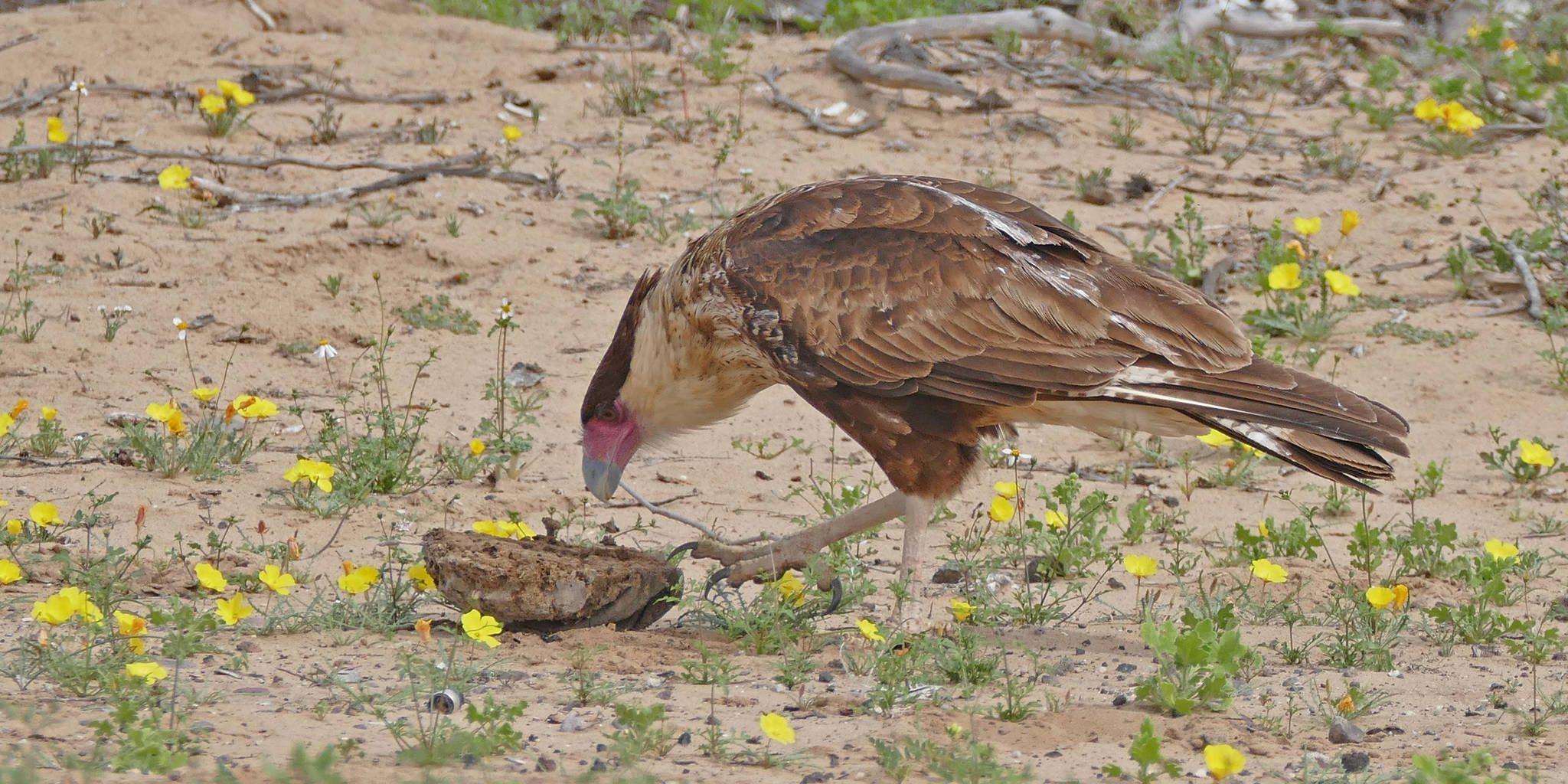For a refreshing change of scenery, I went with some friends to the deserts of central Baja, California. The little town of Loreto in the Mexican state of Baja California Sur sits on the shores of the Sea of Cortez, also known as Gulf of California. A glance around the horizon reveals some rugged, crumbling, brown, dry mountains, a segment of open sea, a lot of tall, columnar cardon cacti, and the waving fronds of fan palms. A change of scenery, indeed.
I awoke in the morning to the swish of palm fronds and the persistent cooing of white-winged doves. A short beach walk from our temporary residence was a broad, braided, tidal flat that would be an estuary if and when the now-dry river delivered water. This was a great place to watch birds, especially at low tide, when mudflats and shallow-water sloughs offered good foraging. There were several kinds of shorebirds, including some familiar ones (dowitchers, greater yellowlegs, least sandpipers, semipalmated plovers, marbled godwits, willets, whimbrels) from home waters. Wilson’s plovers were there too, sporting a much heftier bill than the other plovers. A large flock of (mostly) royal terns rested on the outer sand bars. Big white yellow-footed gulls stalked along the water’s edges and yelled at other gulls that flew overhead.
[Mendenhall Glacier master plan calls for major change]
There were six kinds of herons, including two species of white egrets. A new species (for me) was the reddish egret (so-named for the reddish neck feathers, presumably), whose active foraging techniques were fun to watch. After standing quietly for some minutes, one of those egrets would burst into a bit of fancy footwork, dancing and turning, in hopes of stirring up some small fish. At other times, one would half-spread its wings into a sort of hood and run in a small circle, perhaps corralling fish that might then try to shelter in the shade of the spread wings. So different from the more usual stalking techniques of many other herons.
Another interesting heron was the little blue heron, much smaller than the familiar great blue heron (also present) and decked out in lovely shades of grayish blue. This species is unusual because the juveniles are pure white during their first year (and easy to confuse, on a quick glance, with the white egrets), and the legs looked greenish to me. They start to get the blue plumage in their second year. I have to wonder why they have such a distinctive juvenile plumage.
We made an excursion (bundled up to our ears, owing to a cold north wind) onto the Sea of Cortez to look for blue whales. We found the whales cruising back and forth, occasionally diving and showing their flukes. But it was hard to assess how big they are because only part of the back was showing at any one moment. Blue whales are said to be the biggest animals that have ever lived on earth. They grow to over a hundred feet long and have to eat two to four tons of krill every day during the feeding season. This prodigious size is possible because the great weight is supported by water. Females gestate for almost a year, producing a calf that may weigh two or three tons and reach twenty feet in length. Mama makes over 50 gallons of milk per day — milk that is 35-50 percent fat. On that rich diet, a calf can gain 250 pounds a day. Imagine.
On the way to see those whales, we happened upon a spectacular show. A prodigious school of sardines was under attack by a battery of predators, a real feeding frenzy. A bunch of common (or saddle-backed) dolphins, at least a hundred of them, churned the surface water as they dashed to and fro.
[The Riley Creek pack’s sole survivor]
Overhead, there must have been about 1,000 brown pelicans that plunged down into the turbulence, sometimes dozens of them diving all at once, adding to the chaos with their splashy dives. Blue-footed boobies darted in and out of the diving pelicans, making elegant dives that sliced cleanly into the water. There were a few cormorants and big gulls in the mix and a humpback whale came through too. Smaller gulls, most of them in dark charcoal gray plumage, were juvenile Heerman’s gulls. These gulls have the interesting habit of landing next to a pelican that is just emerging from its dive — in hopes of nabbing a fish that is escaping from the pelican’s big bill. (That reminded me of the Steller sea lions that swim next to the jaws of a humpback whale that has scooped up a mouthful of herring, snatching any hapless herring that managed to jump out of the whale’s maw.)
This fantastic show went on for some time, but eventually the remaining sardines moved away, followed by many of their predators. I wonder how much of that enormous group of fish remained, after that heavy onslaught by the predators.
On the way back to the harbor, we encountered a pod of bottle-nosed dolphins that came to play with the boat — dashing alongside and splashing in the bow waves. We also saw a pair of small dark birds floating together peaceably and we immediately said to each other — oh, those look like murrelets. Indeed they were. Called Cravieri’s murrelets, they nest on some dry, rocky islands in the Sea of Cortez and a few islands on the west side of the Baja peninsula. Such an extremely limited distribution means that their population is very vulnerable to many potential dangers.
That’s part one of fun in the sun on winter break.
• Mary F. Willson is a retired professor of ecology. “On The Trails” is a weekly column that appears every Friday. Her essays can be found online at onthetrailsjuneau.wordpress.com.

